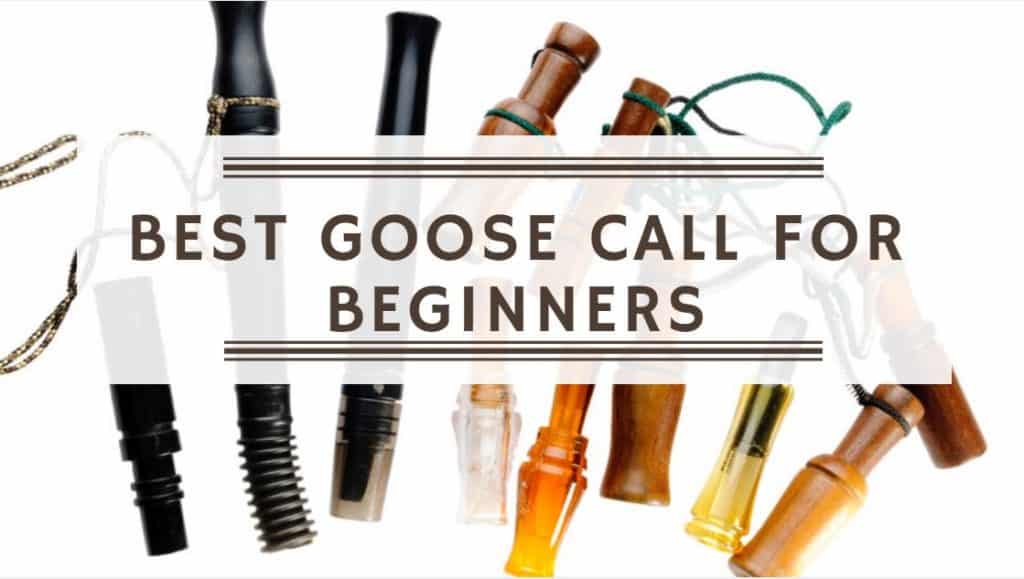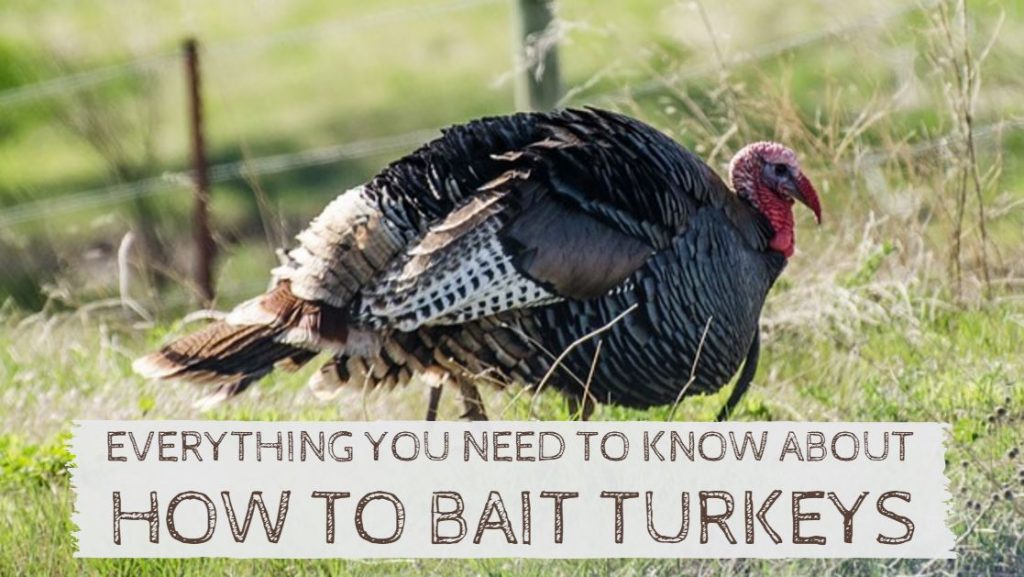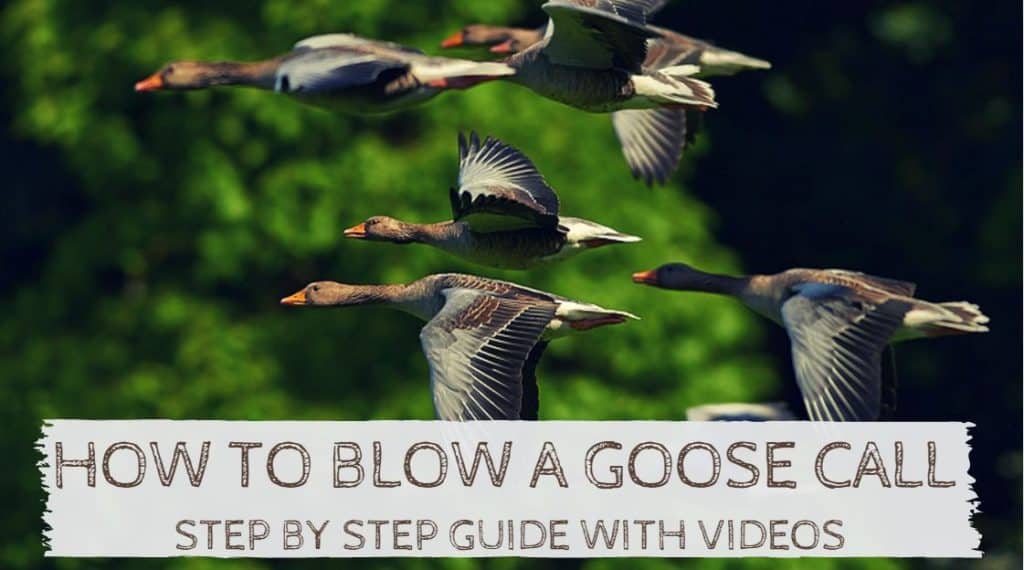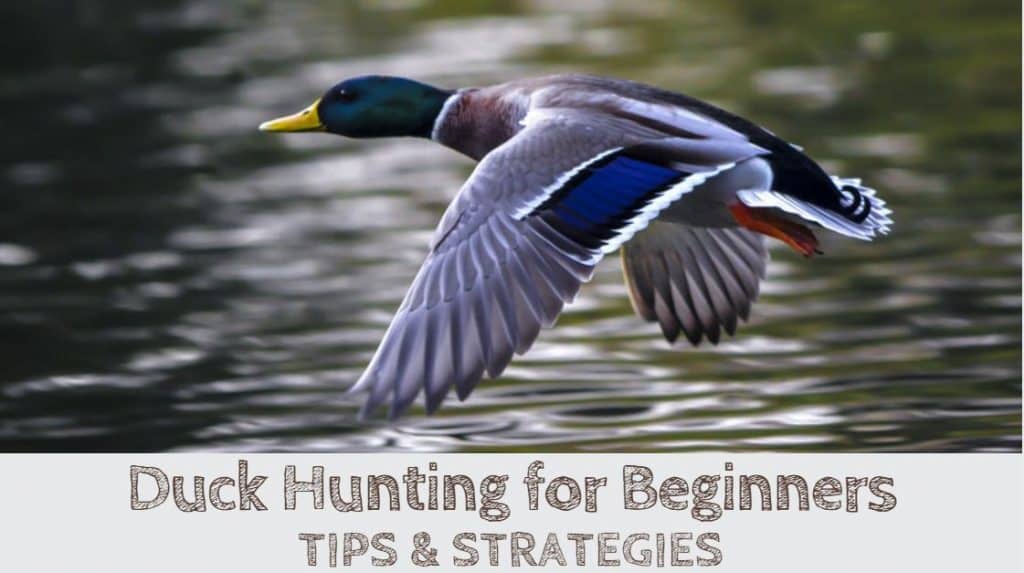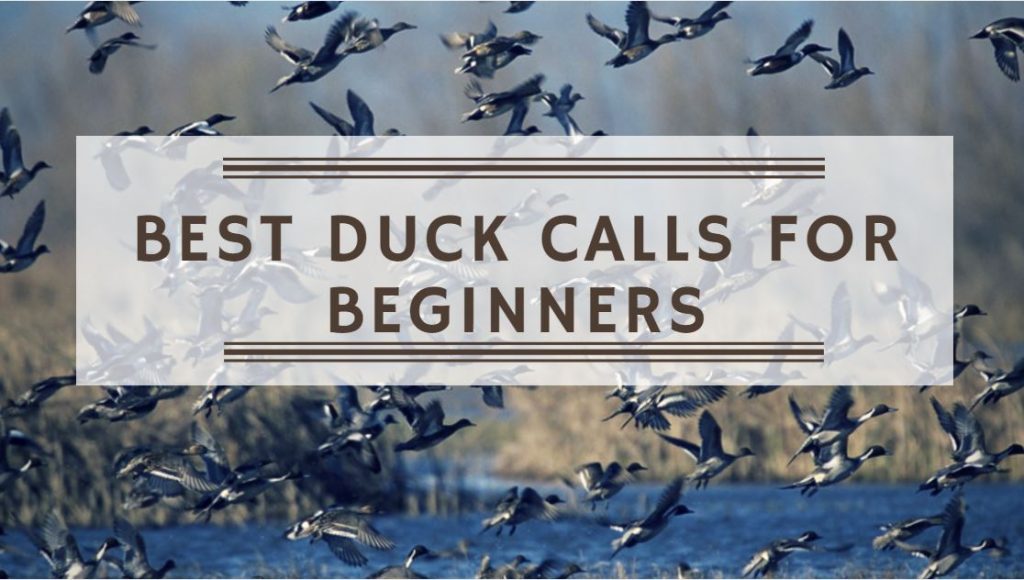Best Goose Call For Beginners: We have reviewed some of the most popular Short reed, Flute, Specklebelly, Snow and Canada goose calls to help you buy the Best Goose Call for Beginners.
In case you don’t have time to read all the reviews:
Best Goose Call for Beginners
Here is our list of 10 Best Goose Calls for Beginners:
- Best Goose Call for Beginners — Primos Honky Tonk
- Best Canadian Goose Call for Beginners — Primos Canada Goose Flute
- Best Snow Goose Call — Primos Shaved Reed Snow Call
- Best Specklebelly Goose Call — Primos Shaved Reed Speck
- Best Goose Call for the Money — RNT Goozilla
- Best Goose Call on the Market — Flambeau Big River (#1 Best Seller)
- Goose Call & DVD Combo for Beginners — Zink PC-1 (Most Gifted)
- Best Camo Pattern — Flextone Team Realtree Canada
- Best Canada Goose Call — Buck Gardner Canada Hammer 2
- Best Short Reed Goose Call — Buck Gardner Grey Ghost Diamond
All About Goose Calls
A goose call is basically a kind of honk that is blown by the hunters when they go hunting in order to turn the geese towards them. It is suitable for all kind of goose hunters, from beginners to professionals. There are a number of goose calls on the market. They differ in color, size, type, sound and even the material used to make them. It is therefore essential to understand them well before deciding on which one should you go for. In this section, we will discuss:
- Types of goose calls
- The material used to make goose calls
- Tone and sounds
Types of Goose Calls
There are 3 main types of goose calls: Flute, Short Reed, and Long Reed.
Flute Goose Calls
Flute calls are the easiest goose calls to use. A flute call has an extended barrel and flute style features which means you don’t need to apply hand pressure like the short reed or long reed calls. Another reason why flute calls are easy to use is that they come with inbuilt back pressure and therefore you can master these calls pretty easily. Due to its ease of use, flute calls are more suitable for beginners. Another reason why beginners love flute calls is that they can be used even in extreme weather as the call takes care of its back pressure.
With some practice, you can use flute calls to produce a wide variety of goose sounds at a right pitch and good volume. However, due to their design, flute calls are difficult to control when calling at a fast pace. Once you have mastered the flute call, you can move up to short reed calls to learn.
Short Reed Goose Calls
High pitch tone produced by short reed goose calls makes them ideal for early seasons. Short reed goose call emerged in the early nineties and continue to trend. Most short reed goose calls have similar components, i.e. a ‘short reed’, tone board, wedge, and barrel. The length of the call determines its sound quality and volume. Lengthier the call, easier it is for beginners to use due to increased built-in backpressure.
Different types of short reed calls are available in the market. The basic components of the short reed are a barrel, insert, tone board, wedge, and short-reed. However, the placement of reed has an effect on the sound quality, the farther the reed the more control you have over the sound. The sound is also affected by the length, if the length is beyond the reed, there is a backpressure which assists the beginners in producing good quality of sounds. Most short reed calls can be handled with one hand.
Long Reed Goose Calls
Long reed goose calls are also known as resonate chamber or resonate cavity calls. These calls have long designs and larger diameters. Resonant cavity flute calls are usually made up of wood or polycarbonate. It is composed of a long, channeled tone board held down by the “floating” wedge. The notes may vary depending upon the airflow increase.
The pitch produced by long reed goose calls is best suited for late season geese. These calls are also easier to use, but low volume and limited tone options are major drawbacks.
Material
Most goose calls are made of either Wood, Acrylic or Polycarbonates.
Wooden Goose Calls: As the name suggests, these goose calls are carved out of wood. A major drawback of wooden goose calls is that they are affected by temperature. Wood responds to temperature, and thus expansion or contraction can be a problem.
Acrylic Goose Calls: These calls are made of acrylic substance, which makes them sound sharper and louder. This doesn’t mean you can’t use an acrylic call for soft tones. With practice, you would be able to use an acrylic call to produce the entire range of sounds, from loud to soft.
Acrylic calls are generally most expensive. These calls need to be handled with care as they can chip or break when dropped. Acrylics are ideal for reaching out there and touching the flock of geese flying by.
Polycarbonate Goose Calls: These calls are made of polycarbonates. As polycarbonates are softer than acrylic, these calls produce softer and raspier tones. These calls are ideal for situations when there are a lot of trees nearby and there is some opportunity for an echo.
Tones and Sounds
Goose calls can produce different types of tones and sounds. Some calls can be adjusted to produce more than one tone. Some of the popular goose call tones include:
The Cluck: It is a single note used to guide the flock to your shooting range. You start out loud then gradually decrease the volume as the bird flies closer. This is the simplest tone to learn for beginners.
The Double Cluck: Another simple tone. A fast, high pitch note is followed by an immediate low pitch note in a rapid sequence. The Double Cluck is best produced using short reed calls.
The Train: It is a moaning sound that mimics a big boss goose. This tone is best used between double clucks and clucks. It is mastered with straight, clean air and tight back pressure.
The Spit Note: This sound is made by shortening the hail note using tight backpressure and a small mouth cavity. It is more commonly used during the geese breeding season.
The Quick Spit: Similar to The Spit Note, this sound is produced using tight backpressure and a smaller mouth cavity but with quicker air. This is an advanced tone which can help you bring out both large and small geese.
The Hiccup: It is one of the hardest tones to learn and master. The Hiccup is produced by biting down with your hands and jaw together. This tone is best used when the birds are under 50 yards away and moving in your general direction.
Best Goose Call For Beginners Reviews
Best Canadian Goose Call for Beginners
Primos Canada Goose Flute Call is a high-quality goose call which is extremely easy to blow. It comes with a unique flex-end hose, which creates automatic backpressure, allowing even beginners to produce a wide range of goose calls with ease. This call is great for reproducing the loud sounds of Canada goose.
Pros
- Perfect for beginners
- Easy to use due to the flex-end hose which creates automatic back pressure
- Produces loud Canada geese sounds
- Easy to take apart, clean and reassemble
Cons
- Nothing really
Best Snow Goose Call
We found Primos Shaved Reed Snow Call to be the Best Snow Goose Call. This another shaved reed goose call from Primos, which is made of quality material and can produce a wide range of sounds at high volume with much less blowing power. This is achieved by shaving the tip of the ‘reed’ to give it a tulip-like shape. This goose call is preferred by most of the customers and has received great reviews overall. It is a white shiny goose call and weighs only 3.5 ounces, which makes it easy to handle. It is very effective as it can produce a whole lot sounds at a time which makes it sound like a flock.
Pros
- Easy to blow, requires much less air
- Made with the high-quality material
- Produces a wide range of sounds at loud volume
- Made of high-quality material
Cons
- Needs a bit of practice
Best Specklebelly Goose Call
Primos Shaved Reed Speck is the best specklebelly goose call on the market. The reed, on most goose calls, has the same thickness from top to bottom. However, this is a shaved reed call, where the tip of the reed has been “shaved” to make it thinner. This tulip-like shape allows you to blow the call with much less air pressure. Primos Shaved Reed Speck produces a wide range of sounds from piercing hails to yodels.
Pros
- Easy to use for beginners
- Requires little air, easy to blow
- Super loud, suitable for large fields or marshes
- Quality material used for making this call
Best Goose Call for the Money
Rich-N-Tone Calls Goozilla Call is unarguably the best goose for the money. If you are new to goose hunting, then this call has been designed for you. Goozilla Call by RNT is a beginner friendly call which comes with excellent back pressure and great volume to help you attract even the distant geese. This goose call is quite lightweight which makes it easy to handle during hunting. It has the good low honk sound which easily makes the geese turn towards you.
Pros
- Extremely simple to learn
- Excellent sounds quality
- A good volume to draw in distant geese
- Durable and long-lasting construction
Cons
- Nothing really
Best Goose Call on the Market
Flambeau Big River Long Honker (#1 Best Seller) is made of high-quality material and is very easy to use. It is a flute call which produces an excellent high pitched tone for attracting goose from far. You can use this call produces a wide range of tones including cluck, deep honk, moan, and murmur. It has been a favorite with goose hunters for decades whether beginner, intermediate or pro.
Pros
- Very easy to use for beginners
- Sounds realistic
- Made of high-quality material
- Attractive and camouflaged look
Cons
- Some users have experienced inconsistent sounds
Goose Call & DVD Combo for Beginners
Power Clucker for Zinc Calls is easy to use, easy to blow and quite simply one of the best goose calls for beginners. Molded from the popular original “custom” Power Clucker. This Zinc PC-1 call comes with an “Easy blow” system which helps novice users produce a whole range of sounds.
Pros
- Great sounding and easy to blow
- Highly recommended for beginners
- Produces the whole range of sounds
- Doesn’t require a huge amount of air
Cons
- Nothing really
Best Camo Pattern
Flextone Team Realtree Canada Goose Call is capable of producing the whole range of goose calls. Its innovative design and flexible bell make it easy for beginners to produce double-cluck and sound of multiple geese. This goose call has a polycarbonate barrel for extra volume.
It can produce a sound of multiple geese at a time because of its squeeze and release system. The flexible bell provides improved volume, backpressure and control of tone. We have found Flextone Team Realtree Canada Goose Call to be the goose call with the most natural camo pattern.
Pros
- Flexible bell makes it easy to use for beginners
- Allows you to produce double-cluck and sound of multiple geese with ease
- Produces the whole range of natural sounding goose calls due
- High pitch and good volume
- Great camo pattern
Cons
- Requires more air power
Best Canada Goose Call
Canada Hammer 2 is a high-quality short reed goose call from Buck Gardner. It is made of high-quality polycarbonates and delivers sounds ranging from clucks and moans to piercing hail calls with amazing clarity. This call is preferred by many hunters due to its people because of its durability and effectiveness.
It weighs about 2.4 ounces and offers a wide range of sound varying from the loudest hail to the softest clucks. Buck Gardner Canada Hammer 2 is easily one of the best Canada goose calls out there.
Pros
- Easy to operate
- Produces a wide range of tones
- High volume thanks to its shaved reed
- Very attractive looks
Cons
- Takes some initial effort to ‘break-in’
Best Short Reed Goose Call
Grey Ghost Diamond call from Buck Gardner is definitely the best short reed goose call. It is a high-quality goose call made of a polycarbonate insert and a wooden barrel. It produces high pitched sounds for attracting even wayward geese. This can be easily considered as the best looking goose call due to its design and color.
Pros
- High quality and craftsmanship
- Polycarbonate insert and wood barrel
- Produces excellent high pitch sounds
- Quick to respond
Cons
- Needs a lot of air
Conclusion
Here is our list of 10 Best Goose Calls for Beginners:
- Best Goose Call for Beginners: Primos Honky Tonk
- Best Canadian Goose Call for Beginners: Primos Canada Goose Flute
- Best Snow Goose Call: Primos Shaved Reed Snow Call
- Best Specklebelly Goose Call: Primos Shaved Reed Speck
- Best Goose Call for the Money: RNT Goozilla
- Best Goose Call on the Market: Flambeau Big River (#1 Best Seller)
- Goose Call & DVD Combo for Beginners: Zink PC-1 (Most Gifted)
- Best Camo Pattern: Flextone Team Realtree Canada
- Best Canada Goose Call: Buck Gardner Canada Hammer 2
- Best Short Reed Goose Call: Buck Gardner Grey Ghost Diamond
These are some of the most popular calls on the market that we reviewed to help you buy the best goose call for the beginners. Although some are easier to use than the others, you can buy any of these calls and it won’t let you down.
Through my years of goose hunting, I have had an opportunity to use various goose calls, but my favorite remains the Primos Honky Tonk. Primos took their time to craft this call from high-quality material and made it user-friendly. It produces a wide range of tones like no other call, that’s why both beginner and veteran hunters love it.
The first time I used Primos Honky Tonk, I attracted a lot of geese and was tempted to buy another one. Compared to others it is also a little louder. It is very effective to the extent that you can call geese, shoot at them, then call them again and get more shots.
Last Updated on January 5, 2024 by Victor Mays
